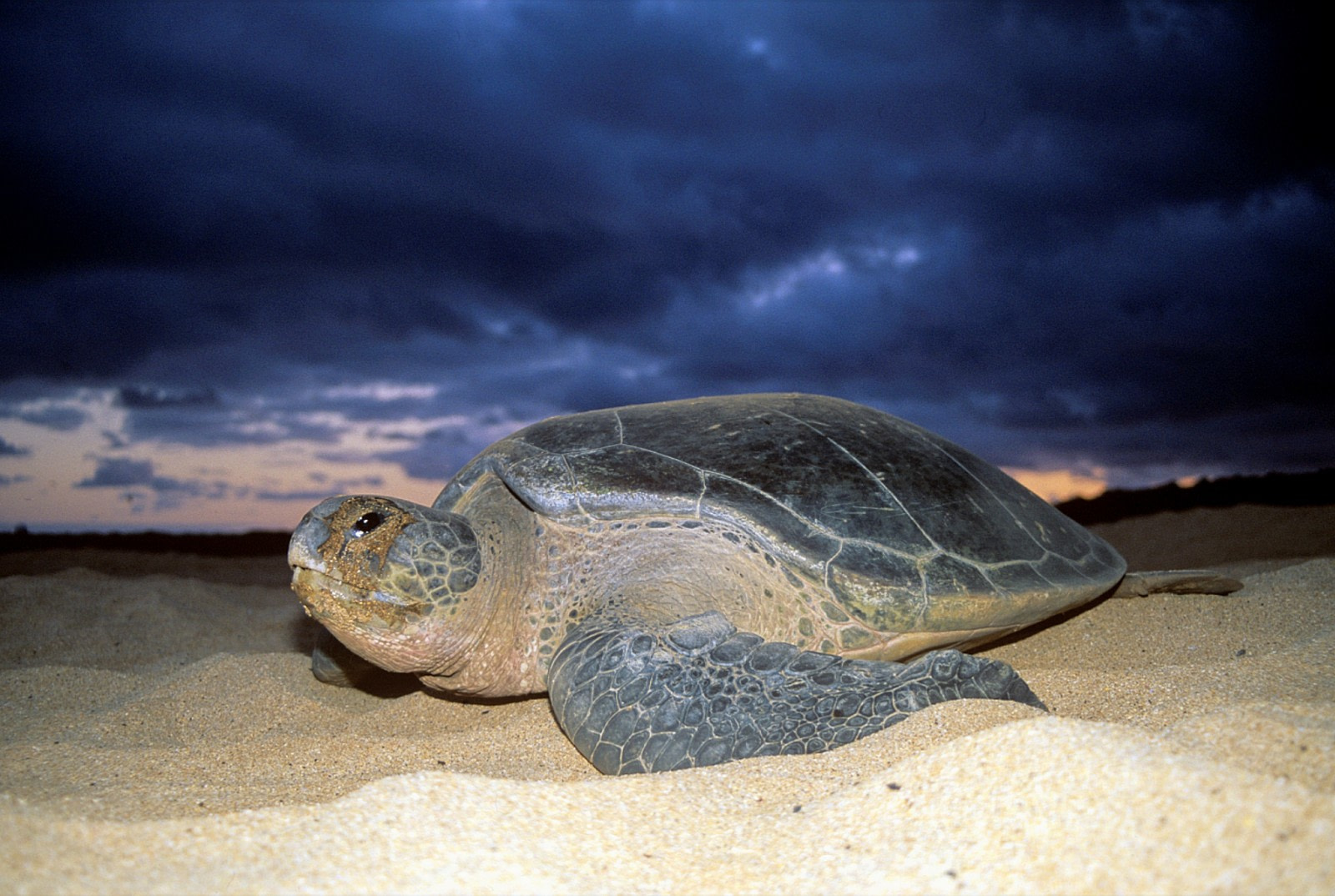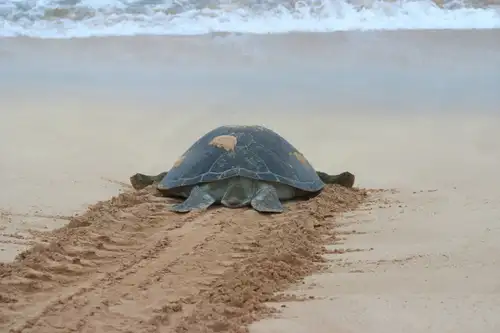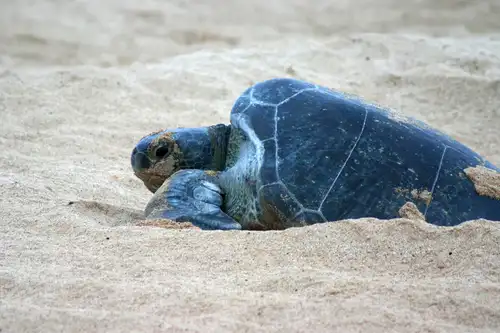Name: Green Turtle (Chelonia mydas)
Length: 1.5 metres (including head and tail)
Weight: 70 to 200 kg on average, the largest up to 400 kg
Location: Tropical and subtropical oceans worldwide. Atlantic subpopulation ranges from Canada and Britain to South America and South Africa. Indian-Pacific population ranges from South Alaska to New Zealand and Chile.
Conservation status: Endangered
Diet: Adults are herbivorous, feeding on seagrasses and algae
Appearance: Short snout, brown top carapace with 5 central scutes and 4 flanking scutes on each side, yellow underside
How do Green Turtles feed?
Green Turtles dive to eat algae and seaweed. They can quickly replace the air in their lungs and have an oxygen distribution system that allows them to withstand deep water pressures without suffering blood gas effects.
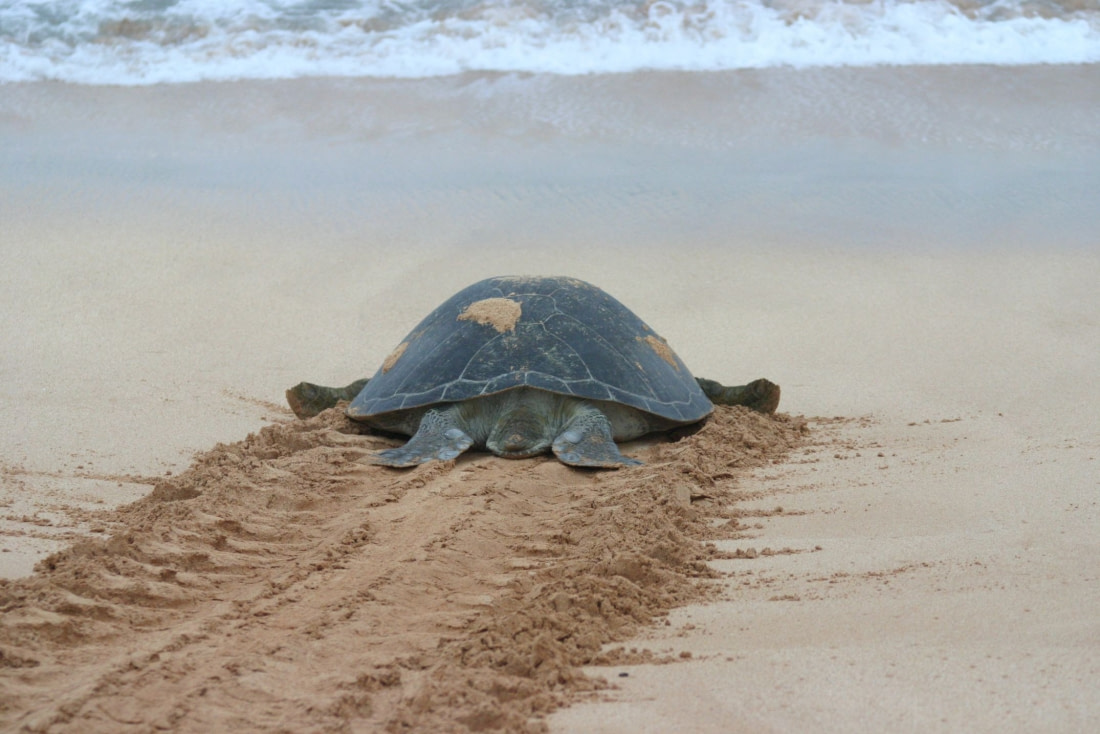
How fast do Green Turtles swim?
Green Turtles typically swim at 1.5 km per hour but can burst up to 30 km per hour when evading predators.
What are Green Turtle birthing rituals like?
Green Turtles reach sexual maturity between 20 and 50 years. They migrate long distances from feeding to breeding grounds, sometimes over 2,600 km. Females mate every 2 to 4 years, while males return annually. Mating occurs in the water, and females lay 100 to 200 eggs per nest, sometimes creating up to 5 nests in a season. The sex of hatchlings is influenced by sand temperature—warmer sand produces more females. Hatchlings make their way to the water and spend 3 to 5 years in the open ocean before settling near shore.
How long do Green Turtles live?
Green Turtles can live up to 80 years in the wild.
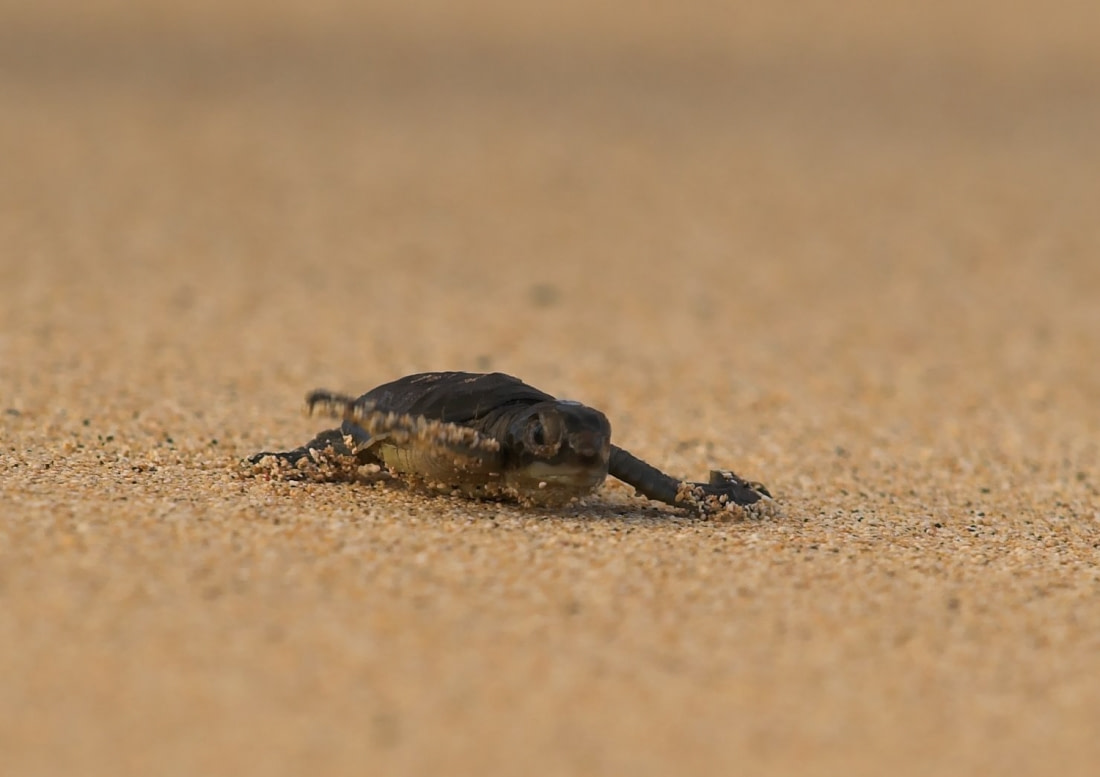
How many Green Turtles are there today?
Estimates suggest there are 85,000 to 90,000 sexually mature females worldwide.
Do Green Turtles have any natural predators?
Adult Green Turtles' main predators are large sharks. Juveniles and hatchlings face predators like crabs, birds, and mammals.
7 Groovy Green Turtle Facts
- Newly hatched Green Turtles are part of the oceans' nekton, meaning they can swim against currents.
- Green Turtles are the largest hard-shelled sea turtles.
- Their name comes from the green-colored fat beneath their shells, derived from their herbivorous diet.
- As reptiles, their blood temperature is regulated by their environment, leading them to bask in the sun on warm beaches.
- Males have longer tails and a pronounced claw on each flipper for holding onto females during mating.
- Green Turtles have been around for 110 million years, making them one of the oldest species on Earth.
- Unlike some turtles, Green Turtles cannot retract their flippers and heads into their shells.



